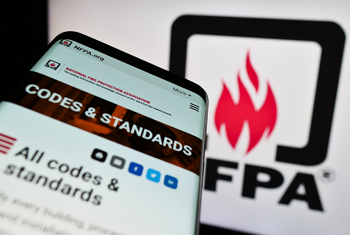Explaining Codes and Standards

Within the electrical industry, the terms "codes" and "standards" are sometimes used interchangeably, leading to confusion; however, these terms have different meanings and purposes.
Standards
Standards are guidelines governing how to design and manufacture safe and effective products. They are written and administered by third-party, safety certification agencies, such as Underwriters Laboratories (UL) and the International Electrotechnical Commission (IEC). These agencies determine the requirements necessary for the safety and dependability of products.
UL Certifications include UL Listings, UL Classifications, and UL Performance Verifications. To earn UL Listings, products are rigorously tested against electrical and fire risks and other hazards and subjected to ongoing oversight of the manufacturing process to ensure continued compliance. For UL Classifications, products are reviewed for specific environmental and performance challenges, while UL Performance Verifications evaluate products for certain performance standards, proprietary standards from the manufacturer, or UL specifications.
The IEC develops and publishes international standards for electrical and electronic products. These standards provide instructions, guidelines, rules or definitions that are then used to design, manufacture, install, test and certify, maintain and repair electrical and electronic devices and systems. IEC standards are organized into categories such as electrical safety, labeling, performance, test methods, and other guidelines for electrical and electronic products.
Codes
Codes are requirements that govern installations and are enforced by local authorities having jurisdiction (AHJ). The National Electrical Code (NEC), part of the National Fire Code series published by the National Fire Protection Association (NFPA), is a code describing how electrical systems are to be installed and how the work is to be performed. While many states and municipalities adopt the current version of the NEC as the established code, they are able to impose additional or alternate requirements. The AHJ is responsible for knowing and enforcing the local codes on a project.
The NEC code covers the installation and removal of electrical conductors, equipment, and raceways, equipment for general use, wiring methods and materials, special equipment, special occupancies, wiring and protection, and communication systems.
Every three years, the NFPA reviews and updates requirements for safe electrical installations into a single, systematized source to remain current with new technology, electrical products and procedures, and safety issues.
Working Together
Understanding the terms “codes” and “standards” can help illustrate how different aspects of the industry work together. When manufacturers adhere to standards and when products are installed by following codes, end users can be assured of safe electrical systems that have been designed, manufactured and installed to minimize electrical hazards and prioritize the safety of people and property.
Gibson Stainless specializes in providing high-quality stainless steel products that adhere to electrical industry standards. For questions about our products, or about codes and standards, please contact us today.

 Print This Page
Print This Page Email This Page
Email This Page